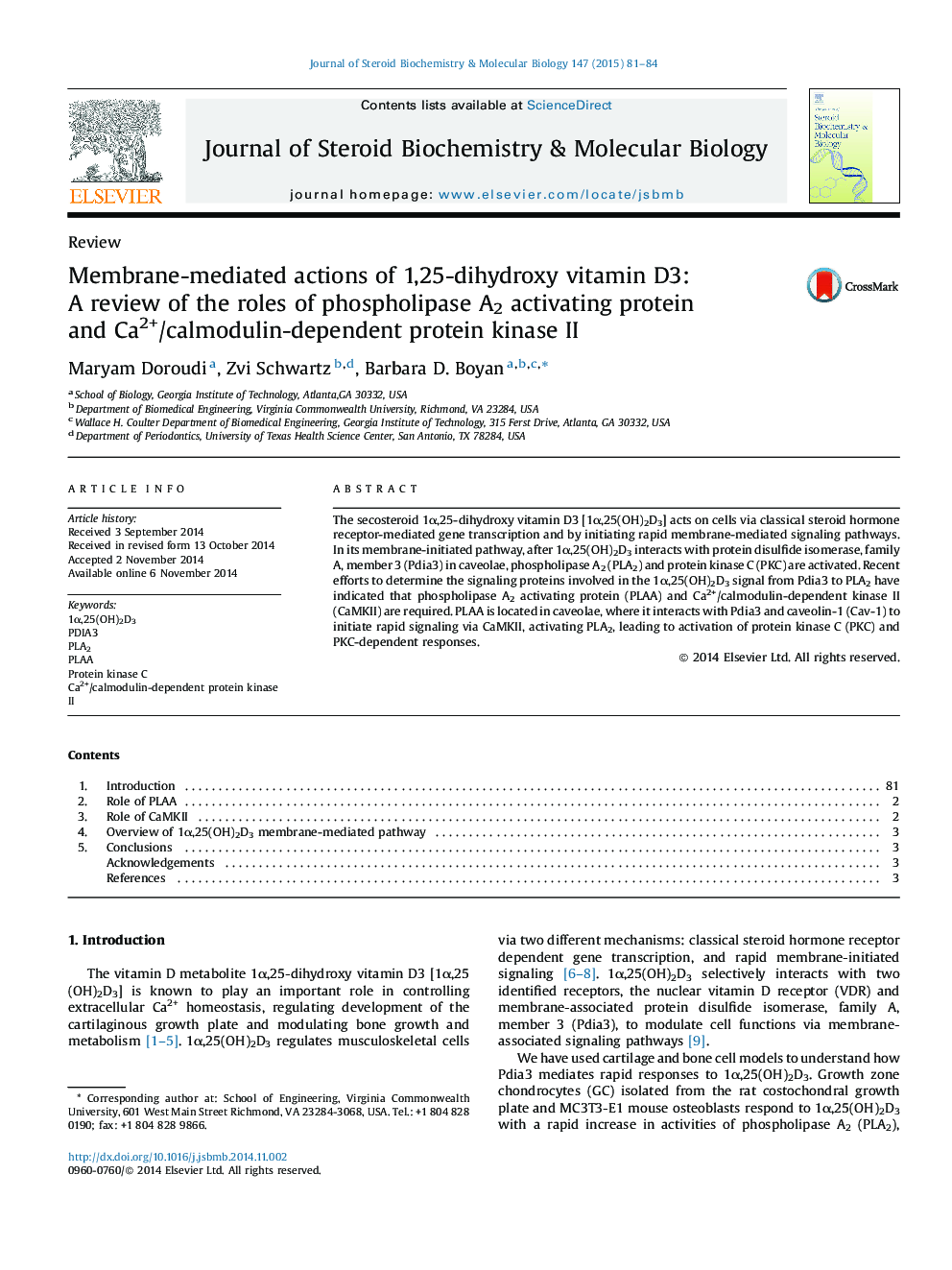| Article ID | Journal | Published Year | Pages | File Type |
|---|---|---|---|---|
| 1991402 | The Journal of Steroid Biochemistry and Molecular Biology | 2015 | 4 Pages |
•Silencing Camk2a inhibits 1α,25(OH)2D3-stimulated PLA2 and PKC activation.•Silencing PLAA inhibits 1α,25(OH)2D3-stimulated CaMKII, PLA2 and PKC activation.•1α,25(OH)2D3 membrane signaling acts via rapid activation of PLAA.•PLAA activates CaMKII, PLA2 and PKC, arachidonic acid release and PGE2 production.
The secosteroid 1α,25-dihydroxy vitamin D3 [1α,25(OH)2D3] acts on cells via classical steroid hormone receptor-mediated gene transcription and by initiating rapid membrane-mediated signaling pathways. In its membrane-initiated pathway, after 1α,25(OH)2D3 interacts with protein disulfide isomerase, family A, member 3 (Pdia3) in caveolae, phospholipase A2 (PLA2) and protein kinase C (PKC) are activated. Recent efforts to determine the signaling proteins involved in the 1α,25(OH)2D3 signal from Pdia3 to PLA2 have indicated that phospholipase A2 activating protein (PLAA) and Ca2+/calmodulin-dependent kinase II (CaMKII) are required. PLAA is located in caveolae, where it interacts with Pdia3 and caveolin-1 (Cav-1) to initiate rapid signaling via CaMKII, activating PLA2, leading to activation of protein kinase C (PKC) and PKC-dependent responses.
